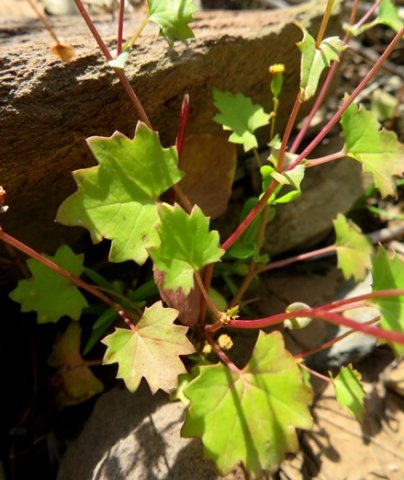Cineraria platycarpa leaves

Author: Ivan Lätti
Photographer: Thabo Maphisa
The alternate leaves of Cineraria platycarpa are surprisingly variable. Most leaves are long-stalked, up to longer than 1 cm, while some upper leaves are sessile, even stem-clasping and differently shaped.
Generally rounded to kidney-shaped and lobed, the leaves may be heart-shaped at the base. Some lower and smaller leaves are eared at the base or triangular, pointed and variably three-lobed. The margins have large, angular teeth.
A few veins radiate from the base in a bigger leaf, while the short, main or primary vein may fork a little distance from the base. Venation is prominent on the lower surfaces, sometimes hairy there. The thinly fleshy blades are yellow-green to pale green and smooth, sometimes with a few hairs in the lobe-angles.
The petioles, stems, some of the leaf veins and even blades may be reddish purple. The common name of purple cineraria probably refers to this, as the flowerheads are brightly yellow (Vlok and Schutte-Vlok, 2015; Bond and Goldblatt, 1984; iNaturalist; JSTOR).

